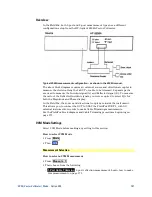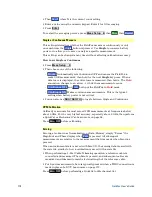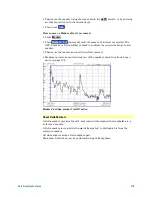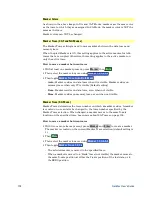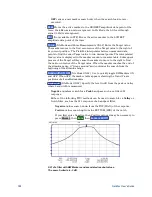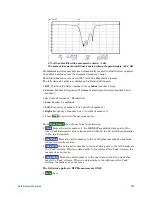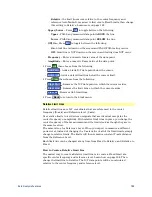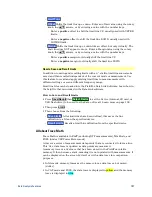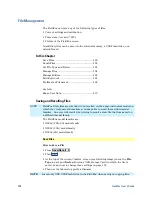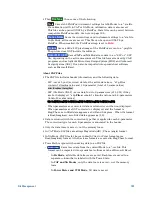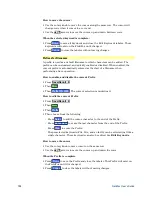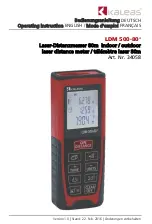
Data Analysis Features
181
S11 of the same filter with same search criteria: -3 dB.
The same values would result from a search criteria of approximately +30.4 dB.
Press
Enter
and four markers are automatically created to find the first negative
or positive bandpass over the displayed frequency range.
Bandwidth Search can be used ONLY with Log Mag display format.
The following six values are displayed for Bandwidth Search:
BW
: Width of the filter. (marker 2 freq)
minus
(marker 3 freq).
Center:
Marker 4 frequency. Mathematical midpoint between marker 2 and
marker 3.
Q:
Center Frequency / Bandwidth.
Loss:
Marker 1 amplitude.
Left:
Frequency of marker 2 or 3 (to left of marker 1).
Right:
Frequency of marker 2 or 3 (to right of marker 1).
Press
Back
to return to the previous menu.
Press
Peak Search
then choose from the following:
Peak
Moves the active marker to the HIGHEST amplitude data point of the
trace. Peak Excursion value is ignored. In SA Mode, the LO feed-through signal
(0 Hz) is also ignored.
Next Peak
Moves the active marker to the next highest amplitude peak from
where it currently resides.
Peak Left
Moves the active marker to the next data point to the left that meets
the ‘Peak’ criteria. When no data points to the left meet the ‘Peak’ criteria, the
marker does not move.
Peak Right
Moves the active marker to the next data point to the right that
meets the ‘Peak’ criteria. When no data points to the right meet the ‘Peak’
criteria, the marker does not move.
The following applies to DTF Measurements ONLY:
More
then:

